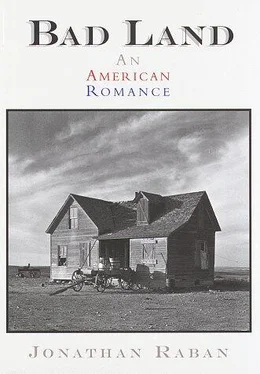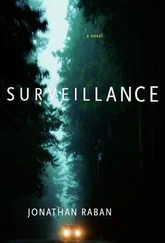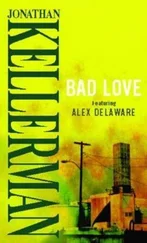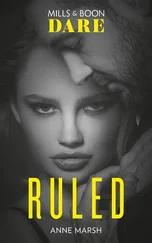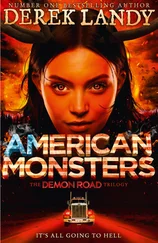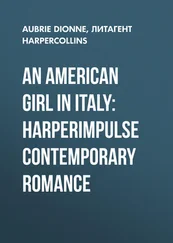A mile on, more cattle, bullocks this time, scarred with the same Bar-Lazy-A-T. New names fell at long slow intervals: Brown … Breen … Shumaker … Householder … Their estates were great, but bare and comfortless. It might be nice enough in June to look out from your window and know yourself to be the owner of all the dust, rock and parched grass you could see, and more — but how would it be in January at minus 25°? Then the sheer breadth and weight of the land would get to you. I thought, I’d rather settle for a more sociable berth, like being a lighthouse keeper.
For every surviving ranch, I passed a dozen ruined houses. The prairie was dotted about with wrecks. Their windows, empty of glass, were full of sky. Strips of ice-blue showed between their rafters. Some had lost their footing and tumbled into their cellars. All were buckled by the drifting tonnage of Montana’s winter snows, their joists and roofbeams warped into violin curves. Skewed and splayed, the derelicts made up a distinctive local architecture.
It took me a while to see the little hilltop graveyards. I had mistaken them for cattle pens. Fenced with barbed wire and juniper posts, each held ten or twelve rotting wooden crosses, with, here and there, a professionally chiseled undertaker’s headstone. The names of the departed — Dietz … Hoglund … Grimshaw — didn’t match the names on the gallows of the working farms. Save for the odd empty jam jar, the individual graves were untended, but someone kept the fences up and the grass neatly cut. I supposed that for farmers here it carne with the territory, the job of looking after the dead strangers on your land.
Once the eye grew accustomed to the dizzying sweep and chop of the prairie and began to focus on its details, the whole country presented itself as a graveyard, it was so strewn with relies of the dead: single fence posts, trailing a few whiskers of wire — the body of a Studebaker, vintage circa 1940, stripped of its wheels and engine, on a sandy knoll — a harrow, deep in the grass, its tines rusting to air — on the tops of the buttes, small cairns of carefully piled stones. For as far as one could see the dead had left their stuff lying around, to dissolve back into nature in its own time, at its own pace. A civilization of sorts, its houses, cars, machinery, was fading rapidly off the land, and it wouldn’t be long now before its imprint was as faint as that of the Plains Indians’ teepee rings or the shallow grooves worn by the single-file herds of buffalo.
I pulled up beside a wrecked house that stood close to the road, and, stepping high and cautiously for fear of six-foot rattlers, made my way through the remains of the garden, past the assorted auto parts, the stoved-in chicken coops, the tin bath with a hole in its bottom, the wringer, the bedstead, the Frigidaire with the missing door. Though its frame had started to corkscrew and its front wall bulged, the house was in better shape than most; a gabled two-story cottage with a collapsed veranda that in its day must have been as proudly, prettily suburban as any farmhouse on the prairie.
Inside, I was met by a panic scurry of wings: swallows had built their wattle-and-daub nests at picture height on the parlor walls. Squealing shrilly, the birds fled through the windows. It looked as if the owners had quit the place as precipitately as the swallows. They’d left most of their furniture as it stood — to the mice, who’d nested in the sofa cushions, and the birds, who’d marbled the slipcovers with their droppings. A flyswatter hung on its appointed nail. A foldaway ironing board stood open, inviting the thought that perhaps the family had left the house for the last time in their Sunday best.
In the room beyond, the walk-in closet was still full of clothes on wooden hangers. I reached for a dress, but the mildewed cotton carne away in my hand like a fistful of spiderweb. In the bottom of the closet stood a pair of cowboy boots. All day I’d felt in urgent need of snakeboots, but these were a good size and a half on the large side for me, and their leather was so stiff and cracked that it felt fossilized.
Above each window in the house, the curtain rods had torn fringes of lace suspended from them. These genteel remnants shivered in the wind. Lace curtains on the prairie … Whoever had put them up had made a thorough job of her hemstitching. Though the curtains themselves had rotted and blown out long ago, their stubs looked as if they might yet survive several more years of gales and blizzards. I could feel the woman’s excitement in her handiwork as she veiled the buttes and outcrops with a pretty fall of white lace. The curtains must have altered the land for her as importantly as any amount of plowing and planting.
The parlor floor was a musty rubble of papers, books, magazines. Here, open on its title page, was a copy of Campbell’s Soil Culture Manual , badly foxed and swollen with damp; there was an ancient Montgomery Ward mail-order catalog. I stirred the rubble with my shoe and raised a mud-splattered postcard, mostly illegible. Dear Neva, Hi Honey, what’s the … with you, did you … or are you … we went fishing … if you have to go down to meet her … we went to the dance Monday … couldn’t darn … Saturday … In the corner behind the sofa lay a sheaf of manuscript pages. They’d been chucked into the single dry spot in the room, which had otherwise been raked from end to end by rain and snow, and the ink on them was unsmudged. Perched on the sofa arm, I settled down to read.
The densely scribbled figures looked like prose, but were in fact an epic of desperate small-hours arithmetic — a sum that continued over seven pages of heavily corrected addition and multi-plication. The handwriting grew crankier, more bunched and downward-sloping, as the sum progressed and the numbers mounted. To begin with it didn’t look so bad. The amounts were small—$4.20, $9.15, $2.54—and they took time to swell up and burst. They sketched a careful life: rent to the Bureau of Land Management (the letters BLM were repeated several times and ringed in a blue doodle that went through the surface of the paper); payments to Sears, to Coast to Coast Hardware, to Kyle’s Radiator Shop, to Lawler Drug for animal vaccines, to J. T. Rugg for seeds, to Walter somebody for tractor tires, to L. Price for a whole bunch of things, to Farmers Elevator, to Sinclair, blacksmith, to Oscar Overland for oats, to Ward’s and Hepperle’s and Gamble’s and Fullerton Lumber.
On page 3 a ringed figure showed for the first time: $1040.40—“Note at Baker Bank.” The interest on this loan looked enviably low; at $40.50 for the year, it carne out at around 4¼ percent. But even this was more than the family was spending on clothes ($35.51, with everything bought at J. C. Penney). $1040.40. The horrible amount of the note was written out several times over in the margins, and islanded with shaky circles.
By the last page, the handwriting was all over the place and the figures were standing, or leaning, an inch high on the paper. How do you turn $2.54 into $5688.90? I’ve made my own pages of calculations in the same distraught writing; seen the numbers gang up on me and breed. What the bottom line always says is the Old 2 A.M. cry, We can’t go on living like this .
This house had been built to last. Its frames were stout, its cedar floor laid like a yacht’s deck. It had been meant for the grandchildren and their children’s children, and it must have seemed — in what? 1915? 1920?—a rock-solid investment: a fine house in the country, with a barn and outbuildings. Even now one could feel the pride of its owners in their creation, though it had sunk in value to a few dollars’ worth of firewood and a convenient nesting box for the neighborhood birds.
Читать дальше
